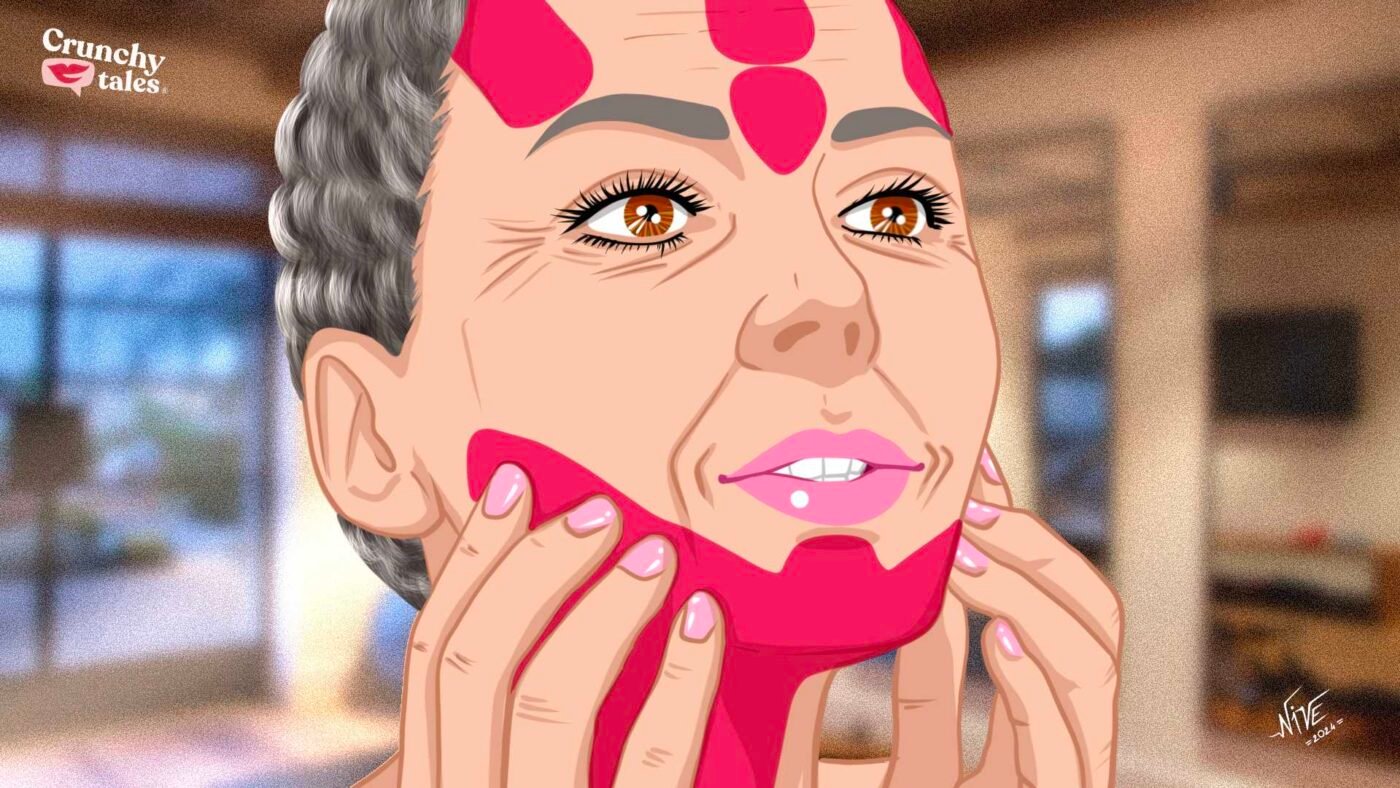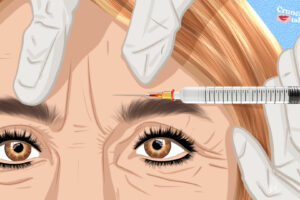Is Face Taping Worth It To Get Rid Of Wrinkles?
Gone are the days of waking up to a flawlessly smooth face, even after a blissful night’s sleep. That’s the truth about maturing complexions. The relentless pull of gravity works its magic on our skin, but that doesn’t mean we have to surrender to the inevitable!
Thankfully, there are powerful beauty tools to help us achieve our most radiant selves. Here’s where face-taping comes in. This technique involves strategically placing strips of adhesive tape on wrinkle-prone areas like the forehead and cheeks.
But can it truly defy the ageing process for our mature skin? Let’s find out.
What is Face Taping?
Think of it as a fitness routine for your face. Thin, gentle tapes, often made for sensitive skin, are applied strategically. These act like tiny trainers, subtly pulling the skin taut and minimizing the appearance of wrinkles. There are two main options: kinesiology tape, similar to what sports therapists use, and pre-cut, medical-grade patches.
This technique has its roots in the 1970s, when a Japanese chiropractor named Dr. Kenzo Kase began using tape to support muscles and manage pain. Whether applied to increase muscle contraction or promote relaxation, the tape also improves blood flow.
The same principles apply to the face. Since our skin is directly connected to underlying muscles, strategic tape placement can provide a subtle lift. This allows essential nutrients and oxygen to reach the skin cells, reducing puffiness and softening lines. The tape also promotes muscle relaxation, particularly beneficial when used overnight. With the lymphatic system working harder during sleep, you can wake up to a brighter, more sculpted complexion, advocates claim.
How To Use Face Taping
While face taping is generally safe for DIY at home, consulting a dermatologist or aesthetician can be beneficial. They can assess your skin type, recommend the right tape or patches, and demonstrate proper application to avoid irritation or improper placement.
Generally, cleansed, makeup-free skin is prepped with a moisturizer (avoid oil-based products). Then, following the product instructions, the tapes are applied in an upward direction to achieve a lifting effect. Most recommend wearing them for several hours, up to overnight.
It’s key to place tape so that it follows the face’s lymphatic system and muscle structure. Think of the nasolabial folds, the outer corners of the eyes, around the cheekbones and on both sides of the forehead. It’s very important not to stretch the tape, as it can stress the muscles and do more damage than good.
Is Face Taping Safe to Use?
While face taping is basically just a sticker for your skin, there can be some drawbacks in the short term. You might get redness or a rash where the tape touches your face, or even be allergic to the glue. Dermatologists warn against using it on sensitive areas like your eyelids because the tape could rip your skin when you take it off.
Experts also say face taping doesn’t actually make your skin better in the long run. It just smooths things out temporarily, like a magic trick. It doesn’t fix anything underneath the surface of your skin. There isn’t a lot of research on the long-term effects, but doctors recommend against using face tape all the time. In fact, it might actually make your wrinkles worse!
So it’s really only a good option for special occasions, not for everyday use.
Does Face-Taping Have Any Real, Physical Benefits?
Possibly, but any benefit would be temporary. It can smooth out those superficial wrinkles, but that depends on the age of the person, how much sun damage there is, how much elasticity or collagen there is in their skin, and how much volume they’ve lost with age.
According to dermatologist Dr Sarah Miller: “Face taping can offer a temporary smoothing effect, but it’s important to manage expectations. It won’t address the underlying cause of wrinkles, like collagen loss.”
The Verdict
Face taping can be a fun, non-invasive way to achieve a smoother look for a night out. However, for long-term results, it’s best to focus on a skincare routine that addresses your specific needs.
The American Academy of Dermatology notes that lifestyle changes can make a difference when it comes to wrinkles and fine lines.
Among the group’s recommendations are to wear sunscreen every day, moisturize the skin, avoid getting a tan from the sun or a tanning bed, testing facial products before using and using products as directed. Also, consider incorporating products that boost collagen production, like retinol or peptides to prevent further damage.
Remember, taking care of your skin is an investment in your overall well-being. So, while face taping might offer a temporary trick, a holistic approach is the key to achieving a radiant look.
Like this post? Sign up to our newsletter to get more articles like this delivered straight to your inbox.





